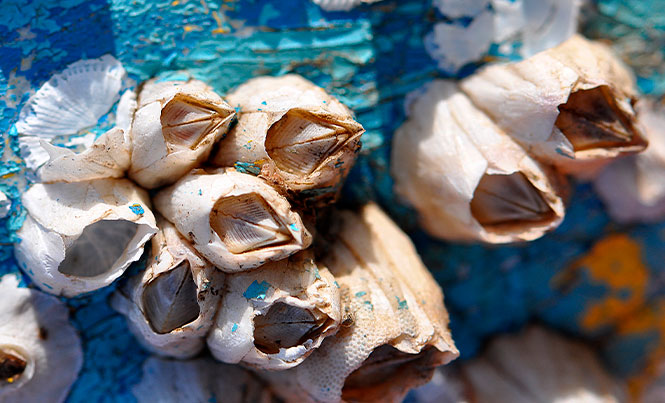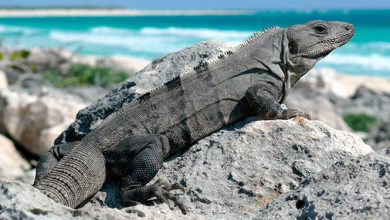Marine Hitchhiking – Underwater Transport
Which creatures use their marine buddies to get around our waterways?

There are many ways in which marine animals get transported in the ocean. Besides their individual capacities using body parts like fins, many animals use the environment or other animals as a means for transportation.
Larvae of fish or invertebrates like lobsters use ocean currents to move from spawning grounds to growing and adult grounds. Some populations of the spiny lobster in the Caribbean, for example, are known to lay eggs a few kilometers off the coast in the south of Mexico and Belize. While the tiny lobsters are still in a larval phase, they get transported north towards Florida by the Yucatan Current.
Another way of moving around is used by some sessile organisms. Barnacles are invertebrates whose larvae are mobile but need to find a substrate to attach to and grow into a little animal that doesn’t move. Sometimes this substrate is a boat or a whale or a marine turtle. Whales are famous for having large amounts of barnacles attached to their skin and their skin looks much lighter in color than what it actually is. These attached travelers get to visit nutrient-rich waters where whales feed that would otherwise be inaccessible for them.
We also have the famous suckerfish or remoras. These are fish that have turned part of their dorsal fin into a sucker and they use it to get attached to large fauna, such as sharks, mantas, or turtles. They travel attached to these large animals and often release themselves to feed. Remoras feed on the leftovers of their host or may also feed on their host’s external parasites, and all this feast with minimum use of energy.
Some animals are thought to use the earth’s magnetic field to orientate their migrations. So, this isn’t a physical means for transportation such as currents or hitchhiking on a large whale, but rather it is like a compass that tells the direction. Hammerhead sharks are thought to use this field when they undertake long migrations across the oceanic islands of the Pacific Ocean.
So next time you are swimming with a marine turtle or a whale shark in the Yucatan peninsula, pay attention to these hitchhikers!







